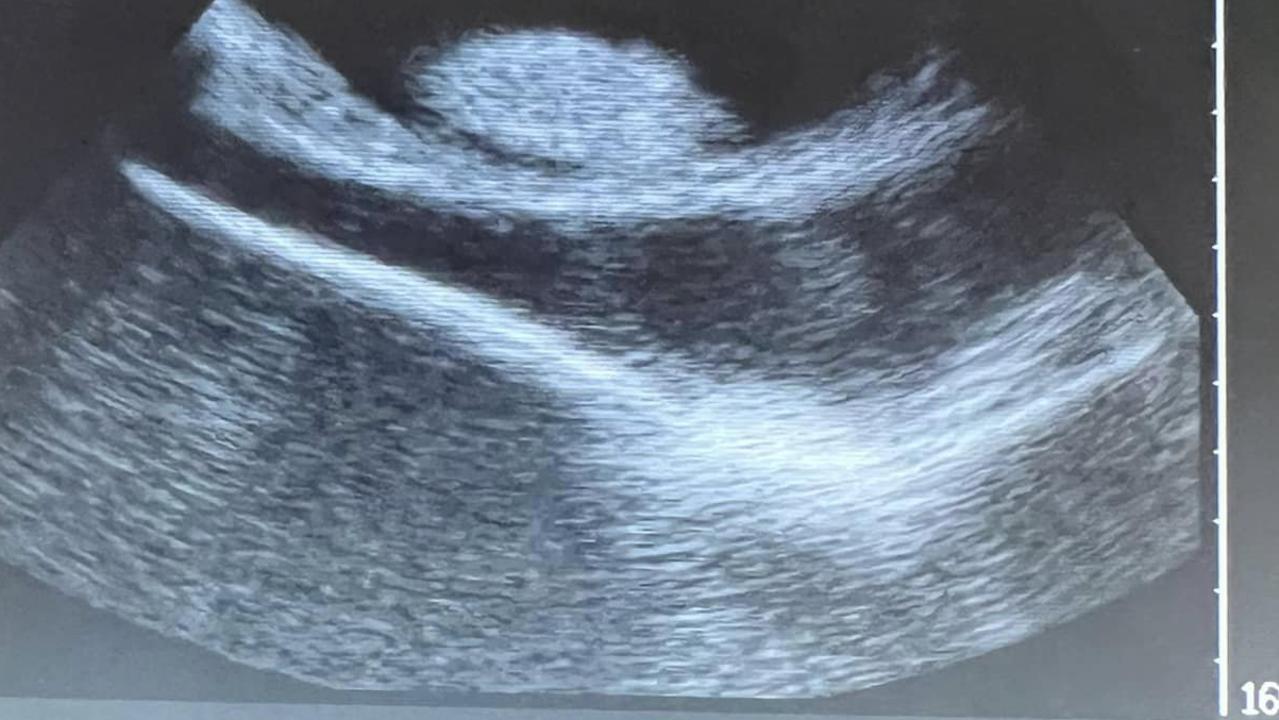[ad_1] Has a shark successfully impregnated a ‘virgin’ stingray at an aquarium in a shopping centre in America?That totally implausible question has
[ad_1]
Has a shark successfully impregnated a ‘virgin’ stingray at an aquarium in a shopping centre in America?
That totally implausible question has set Facebook on fire in recent days and cast global attention on a small business in the US state of North Carolina.
Its star attraction, a female stingray named Charlotte, has become a media sensation as a result.
The rust-coloured round ray is expected to give birth to three to four pups any day now, despite the fact she hasn’t seen a male in about eight years.
A global phenomenon
Charlotte’s shock pregnancy was shared to social media by her owner Brenda Ramer, the executive director of the Aquarium & Shark Lab in the town of Hendersonville.
“The unique thing about Charlotte is we don’t have a male ray,” Ms Ramer said on Facebook.
The revelation sparked immediate global interest, but things appear to have gotten well out of hand when Ms Ramer revealed Charlotte also had bite marks on her body – a common sign of mating among sharks.
And the stingray’s tank mates are two males named Larry and Moe, a pair of white-spotted bamboo sharks.
“Mysterious stingray pregnancy leaves many to wonder if shark is father,” NBC News declared in a headline that went viral.
“Pregnant stingray – a shark may be the dad!” local outlet WMFY News added.
And Canada’s Global News asked: “Virgin birth or shark dad?”
Baby daddy shark, doo-doo-doo?
Jaelen Myers, a PhD candidate at James Cook University in Townsville who has studied stingrays for three years and has a background in marine reproductive biology, is far less open-ended than many media outlets have been.
“No,” Ms Myers told news.com.au about the shark father theory. “A stingray is not about to give birth to some kind of shark-ray hybrid.
“Even if a shark did try to mate with a stingray, it would not produce offspring. That’s for certain.”
There are a few plausible explanations for the so-called “virgin pregnancy” though, and the most likely, while rare, has been observed in captivity the past.
“I suspect the stingray has undergone a process known as parthenogenesis, which essentially means a virgin birth,” Ms Myers explained.
“Parthenogenesis allows females to generate offspring without a male’s contribution, so the cell duplicates its own genetic material. This is actually common in the insect world, but does also occur in some fish and reptiles, including sharks and rays.”
Shedd Aquarium in Chicago had an instance of parthenogenesis when one of its zebra sharks named Bubbles fell pregnant on her own – a rarity confirmed by genetic testing.
“We always considered parthenogenesis basically like a Hail Mary. A female that wasn’t with males and she is trying to pass on her genes,” Lise Watson, assistant director of animal operations and habitat at the facility, told ABC News in the US in 2022.
Unlike Charlotte, Bubbles had three males in her tank to choose from but instead chose an asexual pregnancy.
“Now the question becomes why,” Kevin Feldheim, lab manager at Chicago’s Field Museum, told the outlet. “Why is it that she did not like them? Were they not pretty enough? We don’t know.”
While fascinating, parthenogenesis is not an ideal way of reproducing, with offspring facing a genetic disadvantage, Ms Myer said.
“There is a reason why out in nature, in normal circumstances, a male and a female will exchange genetic material and fertilise eggs just like we do, because it promotes more genetic diversity among the offspring.
“There have been cases where when they’ve documented offspring produced by parthenogenesis, they generally have a lower survival rate, some of them are not viable.”
Second possible explanation
Another theory for how ‘virgin’ pregnancies occur is that sharks and stingrays are capable of storing sperm for long periods of time, to use later on, Ms Myers said.
“They can keep it and if there’s no other males around, or if there’s more favourable conditions in the environment, they might want to wait so that they can assure when they do undergo the development of eggs, they have a good chance of survival.”
This event has also been documented by researchers, with some sharks and rays tucking sperm away for a rainy day for several years.
“Both of these theories are quite rare, but not impossible,” Ms Myers said. “They have been documented.
“Either way, the fact we have another example of this type of thing occurring is great for building on the science and the understanding of how these processes work Any rare instance is great data for us scientists.
“But again, no – a shark did not impregnate a stingray.
“When these offspring are born, genetic testing can determine which of the two theories is correct. If it’s parthenogenesis, they’ll have the same genetic material as the female [mother].”
Kady Lyons, a research scientist at the Georgia Aquarium, has also been busy trying to hose down the interspecies miracle storyline.
“We should set the record straight that there aren’t some shark-ray shenanigans happening here,” Ms Lyons told the Associated Press this week.
But how do experts explain the love bites discovered on Charlotte?
“It could have just been a basic behavioural thing,” Ms Myers said. “It could have been the stingray was nosing in the shark’s space and it nipped at her.”
[ad_2]
Source link



COMMENTS